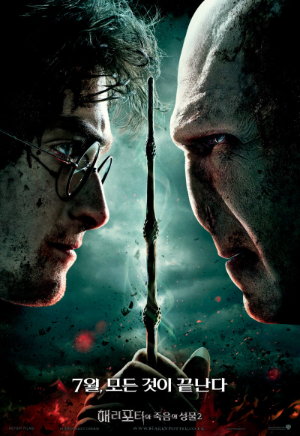
Introduction
The final chapter of the Harry Potter series, Harry Potter and the Deathly Hallows: Part 2 (2011), was a cinematic event that captured the attention of millions worldwide. As the concluding installment of a beloved franchise, the film's success at the box office was expected, but what truly set it apart was its mastery of technical craftsmanship, especially in sound design. From spellbinding sound effects to emotive orchestral scores, the audio elements of this film played a critical role in its ability to immerse audiences and amplify its dramatic stakes. In this article, we’ll explore the key sound design elements that contributed to the film’s record-breaking success.
1. Dynamic Sound Effects: Bringing Magic to Life
One of the most iconic aspects of the Harry Potter series is its magical world, brought vividly to life through dynamic sound effects. In Deathly Hallows: Part 2, the sound design reached new heights, particularly during the climactic Battle of Hogwarts. The clash of spells, with distinct auditory signatures for each type of magic, gave the action sequences a visceral, impactful quality. For example, Voldemort's menacing Killing Curse ("Avada Kedavra") had a sharp, sinister resonance that contrasted with Harry’s protective charms, which exuded warmth and hope. These nuanced sound effects not only distinguished characters but also heightened the emotional stakes. Additionally, the destruction of the castle was accompanied by intricate layers of crumbling stone, roaring flames, and distant screams, creating a chaotic yet immersive auditory experience. Such attention to detail made every scene feel alive and heightened audience engagement.
2. The Score: Elevating Emotional Resonance
The score by Alexandre Desplat was instrumental in shaping the emotional journey of Deathly Hallows: Part 2. From the tender moments of Harry’s farewell to his friends to the triumphant defeat of Voldemort, the orchestral score seamlessly intertwined with the narrative. Desplat’s use of recurring motifs from earlier films, such as John Williams’ iconic "Hedwig’s Theme," evoked nostalgia while signaling the story’s epic conclusion. The emotional crescendo during pivotal scenes, like Snape’s tragic revelation, was amplified by subtle shifts in instrumentation, blending melancholy strings with mournful piano notes. The music not only supported the visuals but also guided the audience’s emotions, ensuring that every moment resonated deeply. This fusion of sound and storytelling demonstrated how crucial the score was in delivering a satisfying and impactful conclusion.
3. Atmospheric Ambience: Building Tension and Immersion
Beyond the obvious sound effects and music, the ambient soundscapes in Deathly Hallows: Part 2 were vital in maintaining the film’s tone and pacing. The eerie silence of the Forbidden Forest, punctuated by rustling leaves and distant whispers, created a foreboding atmosphere during Harry’s confrontation with Voldemort. Similarly, the echoing corridors of Hogwarts, filled with faint footsteps and the hum of magic, added layers of tension as characters navigated the crumbling castle. Even during quieter moments, the sound team used subtle auditory cues to keep viewers engaged. For instance, the faint ticking of a clock during moments of introspection mirrored the looming urgency of the final battle. This meticulous approach to ambient sound design ensured that every frame was rich with auditory depth, drawing viewers further into the wizarding world.
Conclusion
The overwhelming success of Harry Potter and the Deathly Hallows: Part 2 can be attributed to many factors, but its sound design undeniably played a pivotal role. From spellbinding sound effects to an emotionally resonant score and immersive ambient soundscapes, the film demonstrated the power of audio in shaping cinematic experiences. For sound designers, it serves as a masterclass in using sound to elevate storytelling, leaving a lasting impression on audiences. Ultimately, the film’s box office triumph wasn’t just a result of its narrative conclusion it was the culmination of technical brilliance that brought J.K. Rowling’s magical world to life one final time.